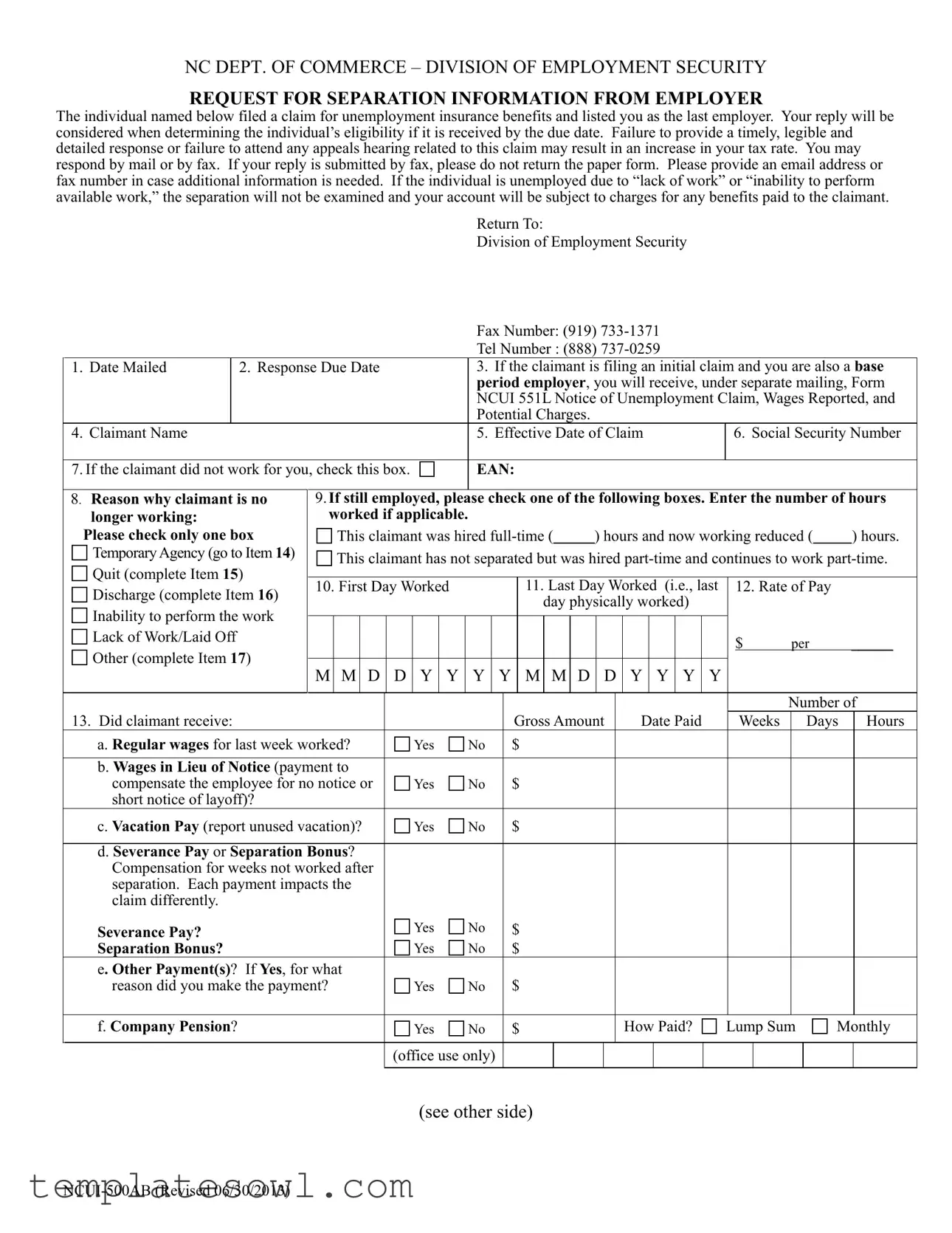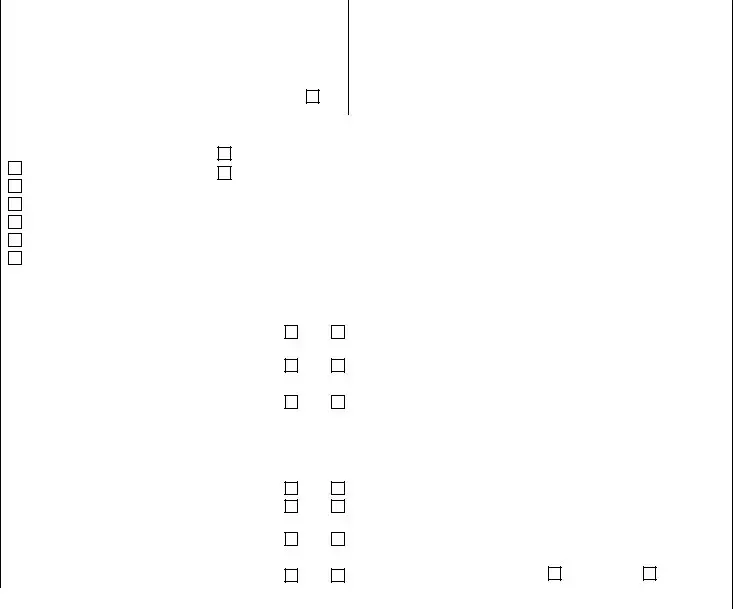What is the purpose of the Unemployment Commission form?
This form is used by the North Carolina Department of Commerce’s Division of Employment Security to collect important separation information from employers after a claim for unemployment benefits has been filed by an employee. The information provided helps the agency determine the eligibility of the individual for benefits. If you are the last employer listed by the claimant, your detailed response is crucial.
What happens if I do not respond to the form?
If you fail to provide a timely and legible response to the form, it could result in negative consequences for your business. Specifically, your tax rate may increase. It is in your best interest to reply accurately and on time to avoid these penalties.
How should I submit my response to the form?
Your response can be submitted by either mail or fax. If you choose to send your reply by fax, do not send back the paper form. It is also helpful to include an email address or fax number so that the Unemployment Commission can reach you for any follow-up information if needed.
What information do I need to provide if the claimant is still employed?
You will need to indicate the number of hours the individual is working if they are still employed but under different circumstances, such as reduced hours or part-time status. Choose only the appropriate option that best reflects the claimant's situation at the time of your response.
What types of payments should I report on the form?
You must report various types of payments that the claimant may have received, including regular wages for the last week worked, wages in lieu of notice, vacation pay, severance pay, and any bonuses. Each type of payment has different implications for the claim and can affect the eligibility of the individual for unemployment benefits.
What should I do if the claimant quit their job?
If the claimant quit, you are required to provide a detailed explanation for their resignation. The form will ask specific questions regarding whether the employee gave prior notification and whether that notification was written or oral. This information aids in assessing the claimant's situation accurately.
How do I handle situations where the claimant was discharged?
If a claimant was discharged, you should include the reason for the discharge when notifying the Unemployment Commission. You might also need to provide details about any previous warnings related to the behavior that led to the discharge. This information can be important during the claims process.
Who should I contact if I have questions about completing the form?
If you have questions or need clarification while filling out the form, it is advisable to reach out to the individual whose name is listed on the form for additional information. Providing a contact number will facilitate effective communication regarding the claim.



 The individual is not separated, is eligible for suitable work assignments, but no suitable work assignments are currently available.
The individual is not separated, is eligible for suitable work assignments, but no suitable work assignments are currently available.